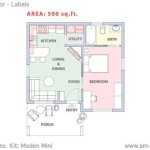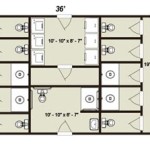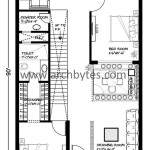Outdoor Cat House Planter: Combining Shelter and Greenery
An outdoor cat house planter offers a compelling solution for pet owners seeking to provide shelter for their feline companions while simultaneously enhancing their outdoor spaces. This dual-purpose structure merges the functionality of a traditional cat house with the aesthetic appeal of a planter, creating a visually pleasing and practical addition to gardens, patios, and decks. The combination not only provides a safe haven for cats from the elements but also allows for the incorporation of greenery, contributing to a more inviting and environmentally friendly outdoor environment.
The design and construction of an outdoor cat house planter require careful consideration of several factors, including the materials used, the dimensions of the structure, and the specific needs of the cat or cats it is intended to house. Proper planning and execution are essential to ensuring that the final product is both durable and comfortable for its feline occupants, as well as aesthetically pleasing and functional for the homeowner.
Beyond its practical and aesthetic benefits, an outdoor cat house planter can also serve as a conversation piece, demonstrating a commitment to both pet welfare and environmental consciousness. It represents a thoughtful integration of function and form, reflecting a homeowner's desire to create a harmonious and welcoming outdoor space for both themselves and their animal companions.
Key Considerations in Design and Construction
The design phase of an outdoor cat house planter is crucial, as it determines the overall functionality and aesthetic appeal of the structure. Several key considerations must be taken into account to ensure that the final product meets the needs of both the cat and the homeowner.
Firstly, the size of the cat house component should be appropriate for the cat or cats that will be using it. The interior space should be large enough to allow the cat to comfortably turn around, stand up, and lie down. The entrance should be adequately sized to allow easy access while also providing a degree of protection from the elements and potential predators. Ideally, the entrance should be slightly elevated to prevent flooding during heavy rain.
Secondly, the choice of materials is paramount. Weather-resistant materials, such as cedar, redwood, or pressure-treated lumber, are highly recommended for the frame and walls of the cat house. These materials are naturally resistant to rot, decay, and insect infestation, ensuring the longevity of the structure. For the roof, a durable and waterproof material such as asphalt shingles or metal roofing is advisable. The interior of the cat house should be lined with a smooth, non-toxic material that is easy to clean and maintain.
Thirdly, the planter component must be designed to properly accommodate plants. Drainage is essential to prevent waterlogging and root rot. The planter should be constructed with drainage holes and a layer of gravel at the bottom to facilitate water runoff. The depth of the planter should be sufficient to accommodate the root systems of the chosen plants. It is also important to consider the weight of the soil and plants when designing the supporting structure of the planter.
Furthermore, the overall design should be aesthetically pleasing and complementary to the surrounding outdoor environment. The cat house and planter should be integrated seamlessly, creating a cohesive and visually appealing structure. The choice of paint colors, stains, and plant species should be carefully considered to achieve the desired aesthetic effect.
Material Selection and Durability
The selection of appropriate materials is a critical factor in determining the durability and longevity of an outdoor cat house planter. The materials must be able to withstand exposure to the elements, including rain, sun, wind, and temperature fluctuations. Choosing durable and weather-resistant materials will minimize the need for maintenance and repairs over time.
As previously mentioned, wood is a popular choice for the frame and walls of the cat house. Cedar, redwood, and pressure-treated lumber offer excellent resistance to rot and decay. However, even these materials may require periodic treatment with a water sealant or stain to further enhance their weather resistance. It is important to use non-toxic treatments that are safe for animals.
Plastic or composite materials can also be used for the walls and roof of the cat house. These materials are highly durable, waterproof, and require little to no maintenance. However, they may not be as aesthetically pleasing as natural wood and may not provide the same level of insulation.
For the planter component, durable and weather-resistant materials such as concrete, terracotta, or plastic are suitable. Concrete planters are heavy and sturdy, providing excellent stability. Terracotta planters are porous, allowing for good aeration of the soil. Plastic planters are lightweight and easy to move. The choice of material will depend on the desired aesthetic, budget, and ease of maintenance.
The hardware used in the construction of the cat house planter should also be durable and rust-resistant. Stainless steel screws and nails are highly recommended. Galvanized hardware can also be used, but it may not be as resistant to rust over the long term.
Attention should be given to proper sealing and waterproofing of all joints and seams in the cat house and planter. This will prevent water from penetrating the structure and causing damage. Silicone caulk or waterproof sealant can be used to seal gaps and cracks.
Plant Selection and Maintenance
The selection of plants for the outdoor cat house planter is an important consideration, as it will impact the overall aesthetic appeal of the structure and the health of the plants. It is important to choose plants that are well-suited to the local climate and growing conditions.
Consider the amount of sunlight that the planter will receive. Some plants thrive in full sun, while others prefer partial shade. Choose plants that are appropriate for the amount of sunlight available. Also, consider the soil type in the planter. Some plants prefer well-drained soil, while others prefer moist soil. Amend the soil as necessary to create the ideal growing conditions for the chosen plants.
It is crucial to select plants that are non-toxic to cats. Many common garden plants are poisonous to cats if ingested. Avoid plants such as lilies, oleander, and azaleas. Safe plant choices include catnip, catmint, rosemary, and thyme. Grasses such as wheatgrass or oat grass can also be planted for cats to nibble on.
When selecting plants, consider their mature size and growth habit. Choose plants that will not outgrow the planter too quickly. Consider the overall design and aesthetic of the planter when making your plant selections. Choose plants that complement the colors and textures of the cat house and surrounding environment.
Regular maintenance is essential to keep the plants in the cat house planter healthy and thriving. Water the plants regularly, especially during dry periods. Fertilize the plants as needed to provide them with the nutrients they need to grow. Prune the plants to maintain their shape and size. Remove any dead or diseased leaves or stems.
Monitor the plants for signs of pests or diseases. If pests or diseases are present, take action to control them as soon as possible. Use organic or non-toxic pest control methods to avoid harming the cat. Replace the soil in the planter every few years to replenish nutrients and improve drainage.
By carefully selecting plants and providing regular maintenance, the outdoor cat house planter can become a beautiful and thriving addition to any outdoor space, providing both shelter for cats and a touch of greenery for the homeowner.

Spring For These 10 Super Cute Modern Planter Designs Webecoist Cat House Diy Safe Plants

Planters With Built In Pet Houses Designs Ideas On Dornob

Planters With Built In Pet Houses Designs Ideas On Dornob

Planters With Built In Pet Houses Designs Ideas On Dornob

Planter With Cat House Built In Made From Metal And Old Wood Diy Outdoor Outside

Planters With Built In Pet Houses Designs Ideas On Dornob

Pawhut Wooden Outdoor Cat House 3 Tier Kitten Shelter W Tilted Roof Yellow Diy At B Q

Good Pet Stuff Cat Litter Planter Chewy Com

Pin By Tammy Johnson On All Things Cat In 2024 Outdoor House Diy

Outdoor Cat House Heated Insulated For Winter Feral Shelter Home Small Size With Platform And Loft Lounging Deck








